So what does one do if a Greek butterfly trip is washed out AGAIN? Well, in this instance going to what until recently was the world’s largest Dalmatian Pelican breeding colony just 70 miles (111 km) away seemed like a welcome opportunity. Prespa Lakes, which straddle the borders between Greece, Albania and FYR Macedonia is also one of just two European sites where Dalmatian and White Pelican both breed; and there is a huge diversity of bird life across the immediate area.
There are two lakes here separated by a narrow strip of land. Megali Prespa to the north is by far the larger, while Mikri Prespa being shallower and having extensive reed beds is the focus for bird life. 1300 – 1400 pairs of Dalmatian and 350 of White Pelican have historically reproduced in the reed beds, while taking advantage of the larger lake for feeding. There are also important breeding populations of Pygmy Cormorant (700 pairs), Black-crowned Night Heron, Ferruginous Duck and most recently Glossy Ibis.
For the second stage of this trip I relocated to Siatista in the Askion Mountains, 90 miles (144 km) to the south-west of Thessaloniki. Having stopped half way back from Xanthi overnight, I drove here on Wednesday morning (3rd) through at times absolutely foul conditions. Things relented upon arrival for long enough to explore the local amenities and access point to the area I intended to search for butterflies, then from mid-afternoon onward it rained continuously.
Butterflies of course only come out with the golden orb, and seasonal weather patterns can vary their emergence times by two to three weeks. So planning any trip abroad is an imprecise art. Just driving around on 3rd it was all too apparent what a suitable location for my purpose I was in, if only the rain would stop and sunshine be given a chance.
Hence this morning it was with some excitement that I set off north-west from my base to experience a national park I had read about but didn’t think I would ever visit. By now my motivation in any case lay more in doing that than hanging around in the mountains above Siatista waiting for any breaks in the grey and wet stuff. For much of the time on both the outward and return journeys I was the only vehicle on the road.
I set Google Maps to “Prespa Lakes National Park” and the route ended at a point on the western shore of Mikri Prespa. If you too are coming here for the first time be warned the cited NP entrance is a very remote location accessed by a long rough road. After yesterday’s prolonged heavy rain I eventually considered it to be impassable. So not wanting to get my hire car stuck in mud with virtually no chance of rescue I left it on firm ground and walked the final stretch.
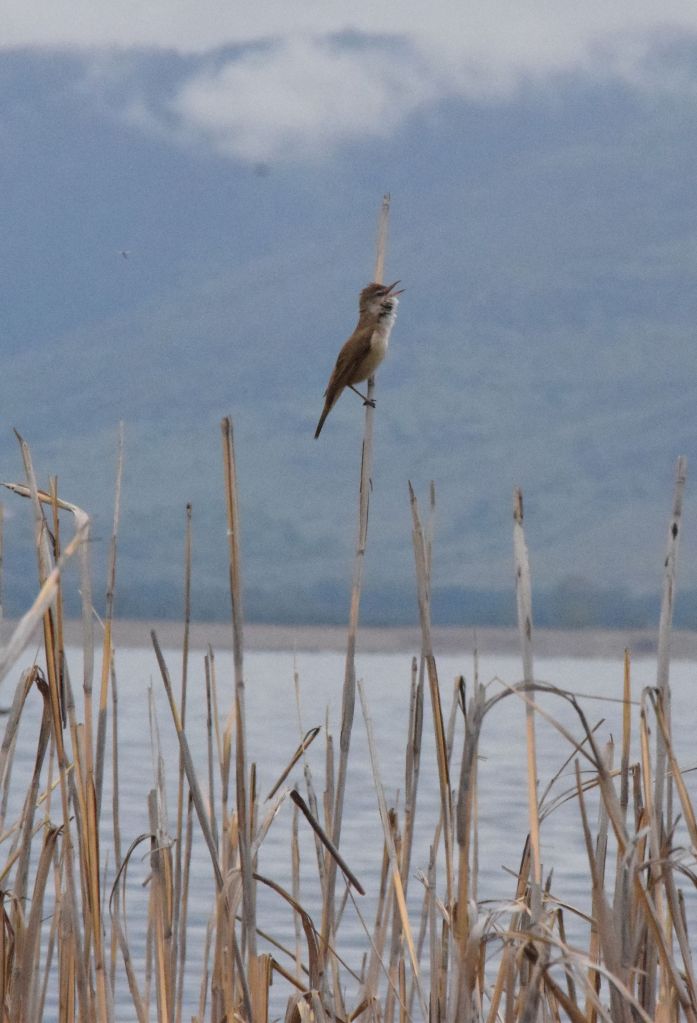

Below this access track stretched extensive reed beds from which the jangling calls of many Great Reed Warbler (pictured above) rang forth all the way along. Little and occasional Great White Egret were loafing here and there, while minor congregations of Pygmy Cormorant appearing as if almost suspended in the reeds stood out at intervals. On the landward side the sound of numbers of singing Nightingale and calls of Golden Oriole and Hoopoe filled the air.
At my destination lay this (above). I had wondered if the national park would have any kind of visitor centre, but a makeshift field station was all there is. I couldn’t detect anything remarkable about the stretch of shoreline at the end of the track and felt glad to have been prevented from taking the car down there. Then gladder still to drive it safely away.
The best place to observe Pelicans was from the road that runs along the lake’s reed fringed north-west shore. There are two viewing platforms there beside an empty building, and a floating footbridge that crosses the lake to an island Agios Achillios. I viewed upwards of 30 Dalmatian Pelican (pictured below) today, either on the water or in flight, and at one point 17 were spiralling in the air like the Oxon Red Kites at home.

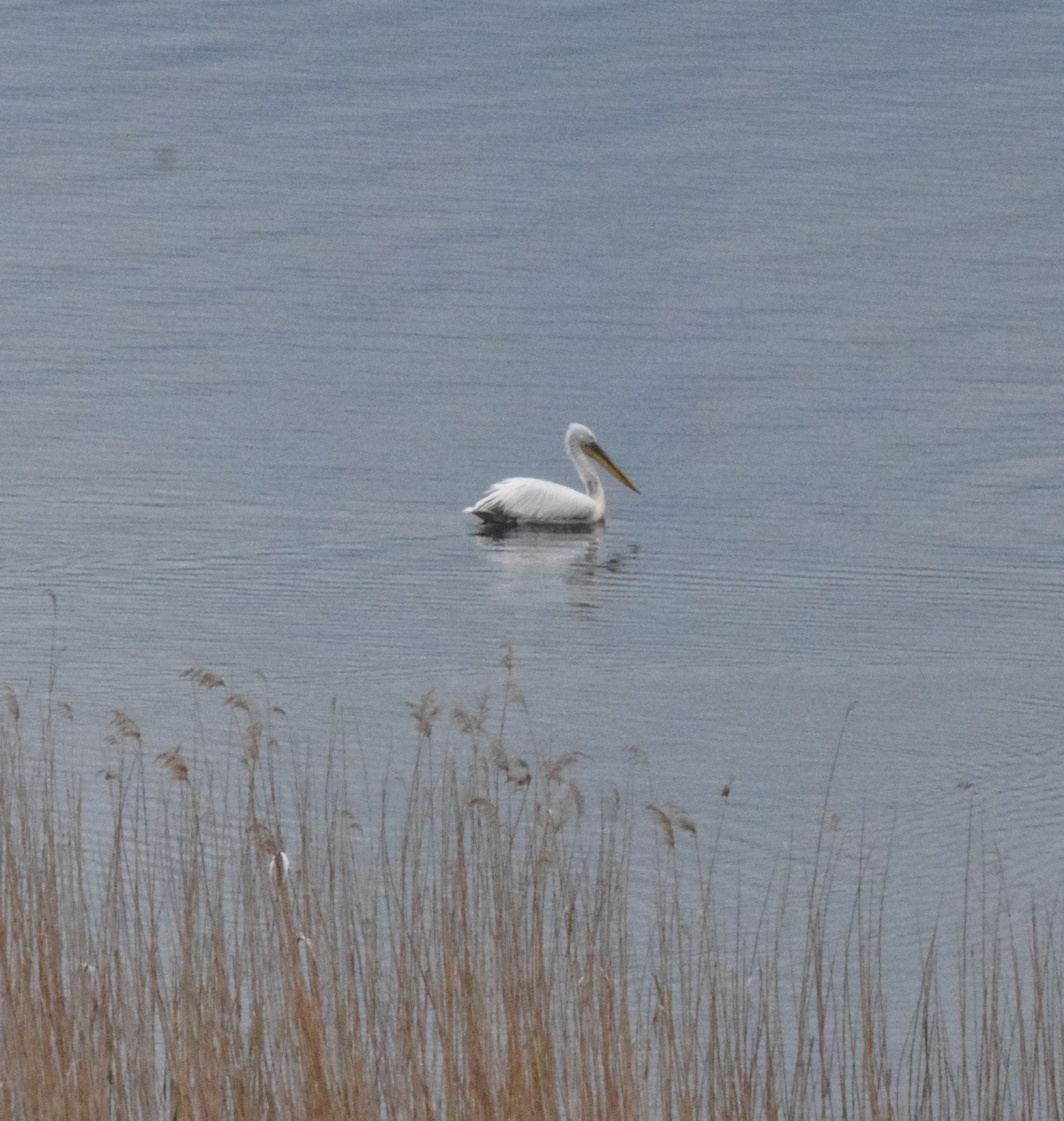
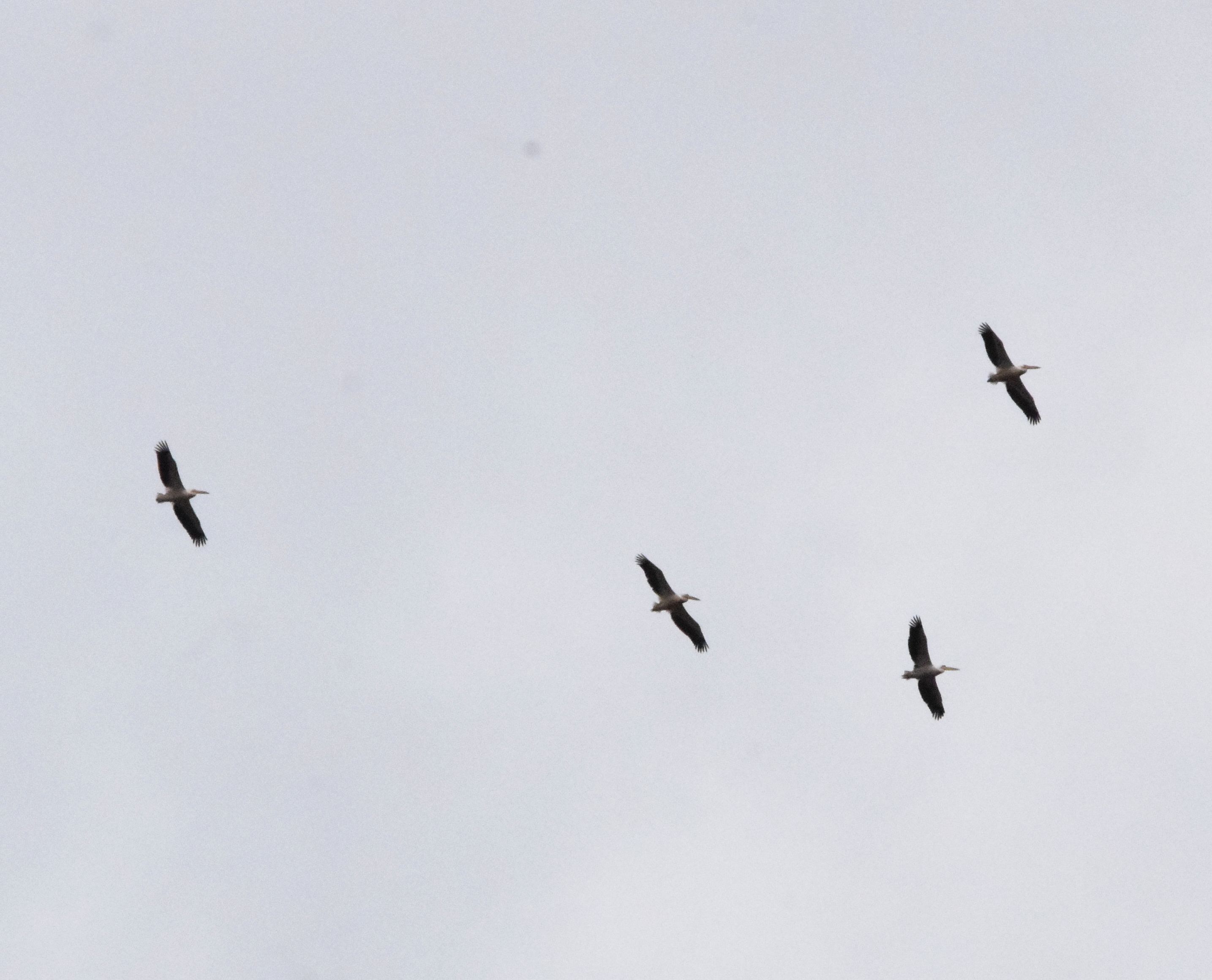
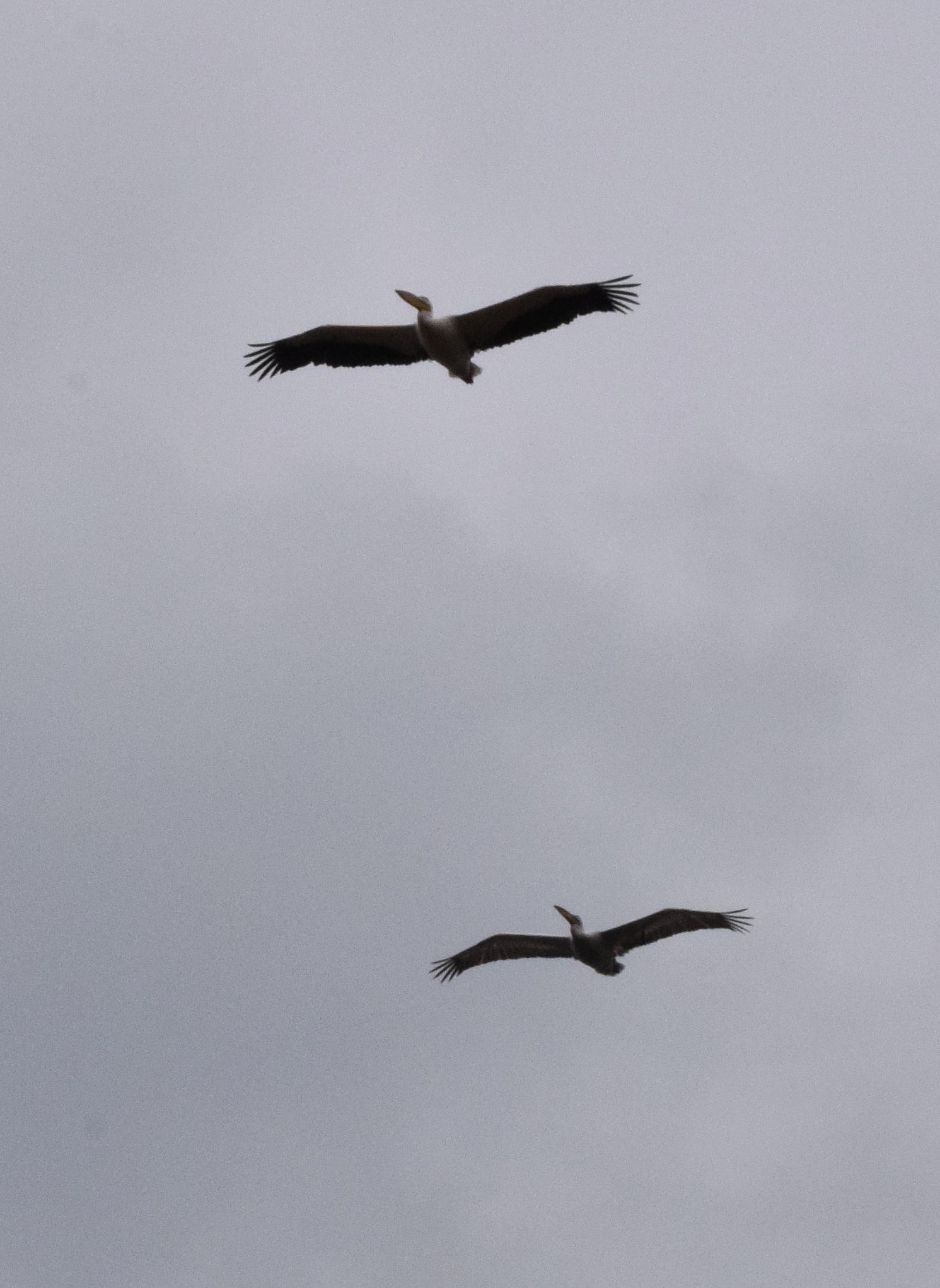
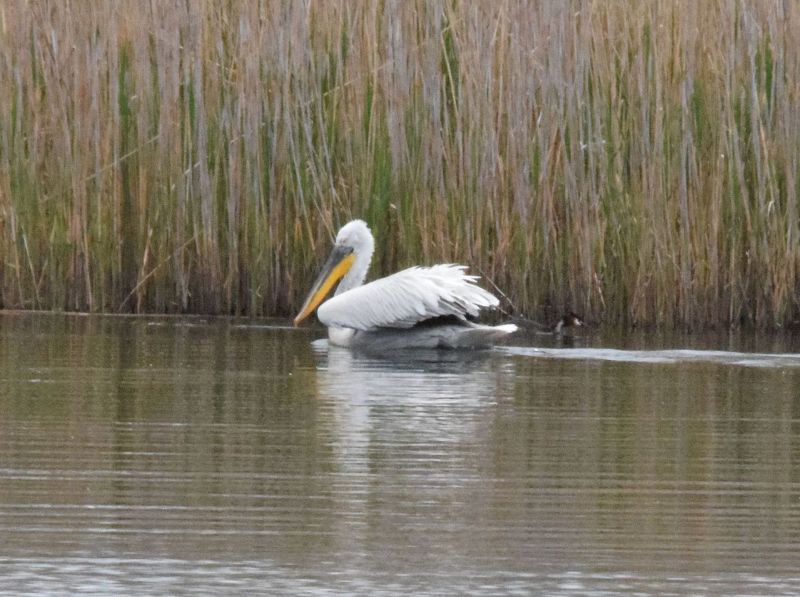
I at first assumed given these numbers the breeding season must not yet be in full swing. But writing this up I learned that in 2022 bird flu (see here) wiped out 60 per cent of the Dalmatian Pelicans here. The malaise broke out very early in the season, so after carcasses were removed and incinerated the later returning White Pelicans were mostly saved. The event has been described as the worst ecological tragedy ever to hit Greek wildlife. When the outbreak was over just 100 Dalmatian pairs raised 90 young. Nature is resilient and now has a task in hand to restore this colony to its former status.
There was no rain throughout my time here today but conditions remained steadfastly overcast so I did not experience the site at it’s best. I feel pleased to have now been to both of Greece’s major Pelican breeding sites after Lake Kerkini in May 2017 (see here). This post’s record shots gained in poor light reflect how it was not possible to get close to the birds. At Kerkini visitors are taken out to within a safe distance by boat. The more remote and probably less visited Prespa lacks the facilities and pazazz of Kerkini but was still good value on this alternative day out.


